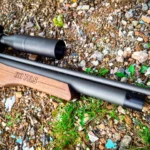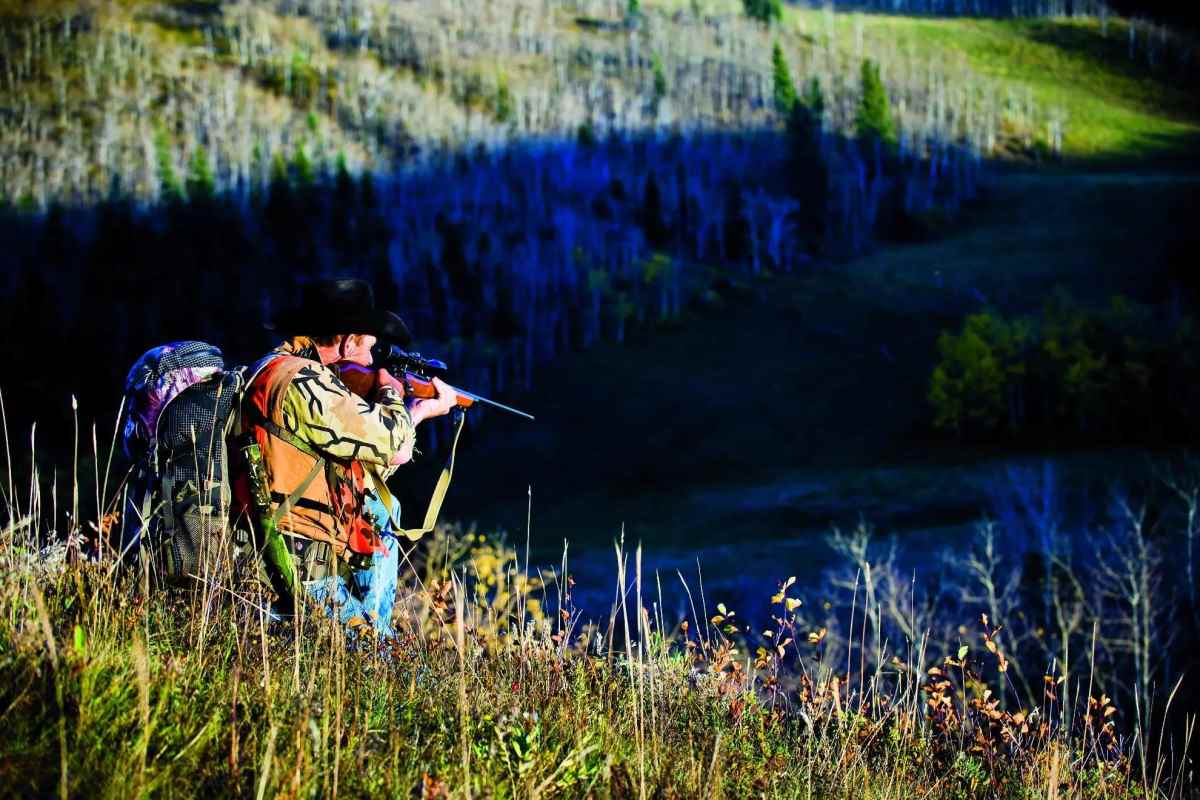
Photo by Tony Bynum
The unmistakable audible report of the bullet entering the shoulder was music to my ears as the impressive 370″ bull collapsed to the ground. There was no thrashing, kicking, or even a twitch from the very dead bull. “Damn… What in the hell are you shooting?” I asked my hunter as he intently kept his crosshairs on the lifeless beast. At the time, he was discreetly testing a prototype of the 33 Nosler shooting a 225-grain Accubond. This experience earned the 33 Nosler my very inconsequential stamp of approval for the hot new cartridge. But other cartridges have not fared so well.
For the last seven years, I have had the opportunity to guide elk and mule deer hunters full-time on a 240,000-acre private ranch that is home to some of, if not the most incredible elk hunting in the country. During that time, I have personally seen more than 60 bulls hit the dirt and, unfortunately, some that got away. Through these experiences, I have constructed my own non-scientific but observation-based opinions about what does and does not work when it comes to the terminal performance of varying cartridges, bullet types, and proper shot placement on elk. Not everyone will agree, and we are entitled to our own opinions, but the guide life has allowed me a large sample size from which to draw my conclusions. Take ’em or leave ’em.
Table of Contents
- 1 ALL CARTRIDGES ARE NOT CREATED EQUAL
- 2 BULLET SELECTION
- 3 SHOT PLACEMENT
- 4 ELK RIFLES
- 5 BROWNING X-BOLT WESTERN HUNTER LR
- 6 SAVAGE 110 ULTRALITE
- 7 WEATHERBY MARK V BACKCOUNTRY 2.0 CARBON
- 8 WINCHESTER MODEL 70 EXTREME WEATHER
- 9 SPRINGFIELD MODEL 2020 WAYPOINT
- 10 BERGARA PREMIER CANYON
- 11 BENELLI LUPO
- 12 MOSSBERG PATRIOT LR HUNTER
- 13 NOSLER 21
ALL CARTRIDGES ARE NOT CREATED EQUAL
Selecting the right cartridge is crucial to bringing these insanely tough animals to the ground as quickly as possible. I always joke with my clients that, “There is no such thing as overkill.” Obviously, that is within reason, but if you can shoot a bigger-bored rifle accurately, you do give yourself a larger margin for a shooting error.
Ideally, I like to see my clients shooting some cartridge variation of the .30 caliber. Most .30-caliber cartridges are sufficient, but some of my favorites include the classic .300 Win. Mag, and the more modern .300 PRC and .30 Nosler. With that said, there are numerous cartridges shooting .277 and .284-caliber bullets that are very effective elk killers. These include the 6.8 Western, 7mm Rem. Mag, .280 Ackley Improved, 28 Nosler, and 7 SAUM, to name a few. From there you have the .338-caliber variations that all carry more than enough authority to bring the biggest bulls on the mountain to their final resting place.

To address the elephant in the room: No, I am not a big fan of the 6.5 Creedmoor, and to a lesser extent the 6.5 PRC, when it comes to taking down a big mature bull. In fact, I have heard one outfitter halfway joking, but mostly seriously, ban his hunters from using a 6.5 Creedmoor on big bulls. Have I seen plenty of elk shot with these cartridges? Yes…and some died very quickly. But I have also seen bulls go a long way after what appeared to be a well-placed shot, as well as bulls wounded and lost after being shot with the 6.5 Creedmoor. For the record, I am not a 6.5 hater. In fact, I believe the 6.5 Creedmoor and 6.5 PRC are two of the most inherently accurate cartridges on the market today. But they leave little margin for error in the elk woods and, as a guide, the shooting ability of my clients is one variable I have zero control over.
Bad shooting is on the hunter, but let’s look at some numbers. The generally accepted benchmark for bullet energy needed to effectively kill an elk has long been 1,500 foot-pounds. When you look at most common 6.5 Creedmoor hunting loads, anything past 300 yards is resulting in sub-1,500 foot-pounds of energy being transferred into the intended target. The 6.5 PRC does extend that range to just over 500 yards before its energy level drops below that benchmark, making a legitimate argument for its efficacy on elk within a reasonable distance. But just because you can, doesn’t mean you should. Should one of these cartridges be your go-to elk rifle, be sure to know its limitations and adjust your strategies accordingly.
BULLET SELECTION
When it comes to taking down an elk, selecting the right bullet for the job is just as important as cartridge selection. First and foremost, you will need a well-constructed bullet capable of punching through dense muscle and breaking bone. Both monolithic and bonded bullets are great options, as well as other similar-designed projectiles engineered to penetrate and transfer an immense amount of energy. There are a lot of great elk bullets on the market. Some of my personal favorites include Hornady’s new CX bullet, Nosler’s Accubond, Federal’s Terminal Ascent, and Barnes’s TTSX.
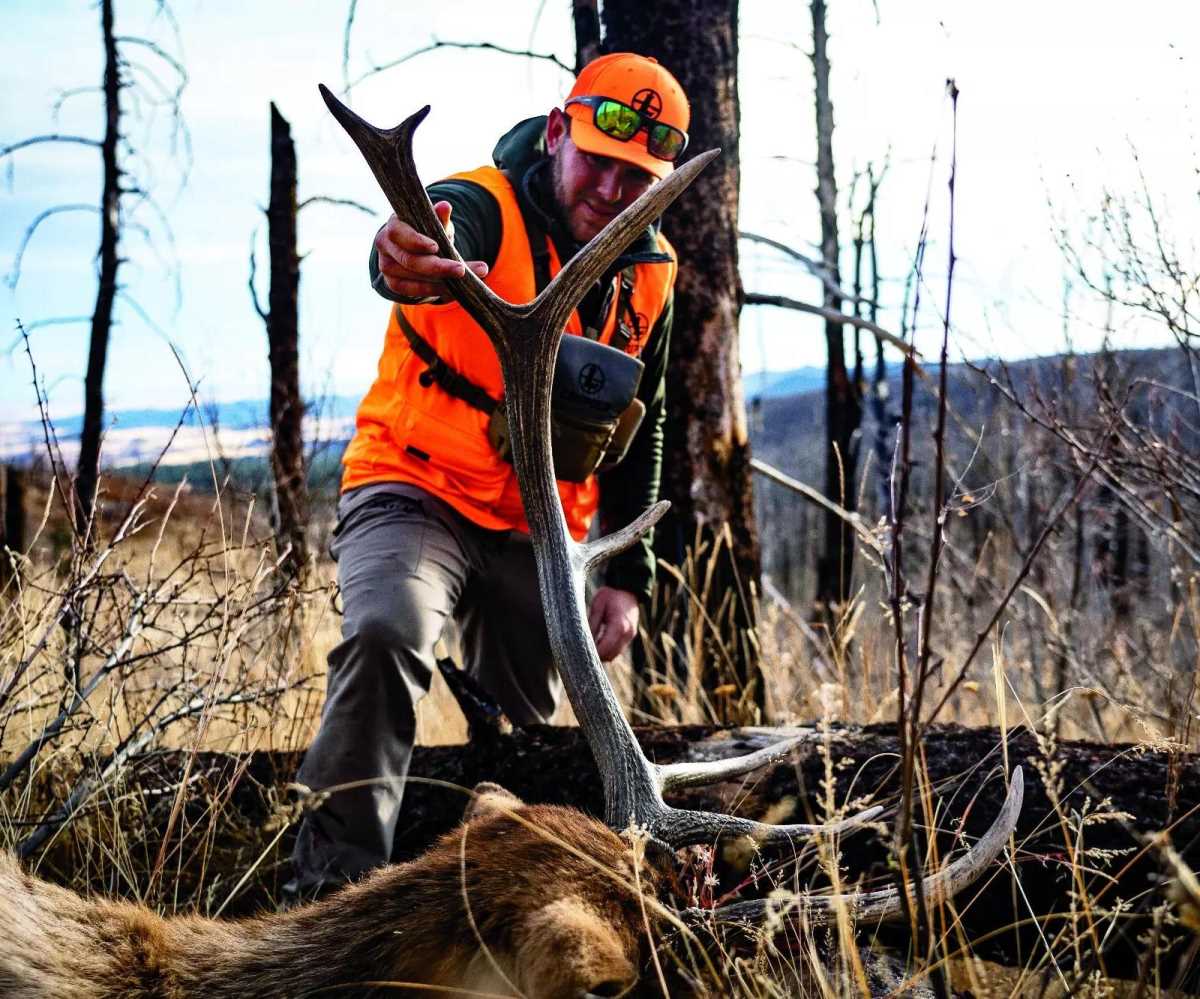
Weight is not nearly as important as selecting the right type of bullet, but I like to see a bullet with a high sectional density and a weight of at least 150 grains when shooting a mature bull. Again, I have seen smaller bullets take down an elk and have even killed two different bulls myself, 10 to 15 years ago, with the 140-grain Barnes Triple Shock out of my 7mm Rem. Mag. But I believe that a larger bullet gives you more room for a shooting error by transferring exponentially more energy and creating larger wound channels compared to their smaller counterparts.
SHOT PLACEMENT
I do not want to beat a dead horse, but I do want to briefly address shot placement, as there is often debate over this topic. If you are shooting a perfectly broadside bull with a proper bullet, settle the crosshairs on the shoulder, directly in line with the front leg and centered from back to brisket, and then squeeze the trigger. With the aforementioned bullets, you will not only take out both lungs with that shot, but you will break shoulder bones and bring the giants to the ground. This shot placement also allows the most margin for bullet drift and drop, with a killing blow being delivered six inches in any direction from that point of impact. The one area you want to avoid like the plague is the small dead zone beneath the spine but above the lungs.
When squeezing the trigger on a bull quartering-toward or away from you, shoot for the exit hole. What I mean by that is settle your crosshairs where you visualize your bullet exiting on the offside. If you send a bullet tucked into the shoulder on a bull quartering toward you, chances are you are in for a long track job. Instead, if you can picture where you want the bullet to exit, you would have put the bullet on or in front of the shoulder which would take out multiple vital organs and result in a quick, clean kill. It is also worth noting that when taking an angled shot, you absolutely need a well-constructed bullet with some substantial weight behind it to penetrate through two to three feet of dense muscle, organs, and bones.
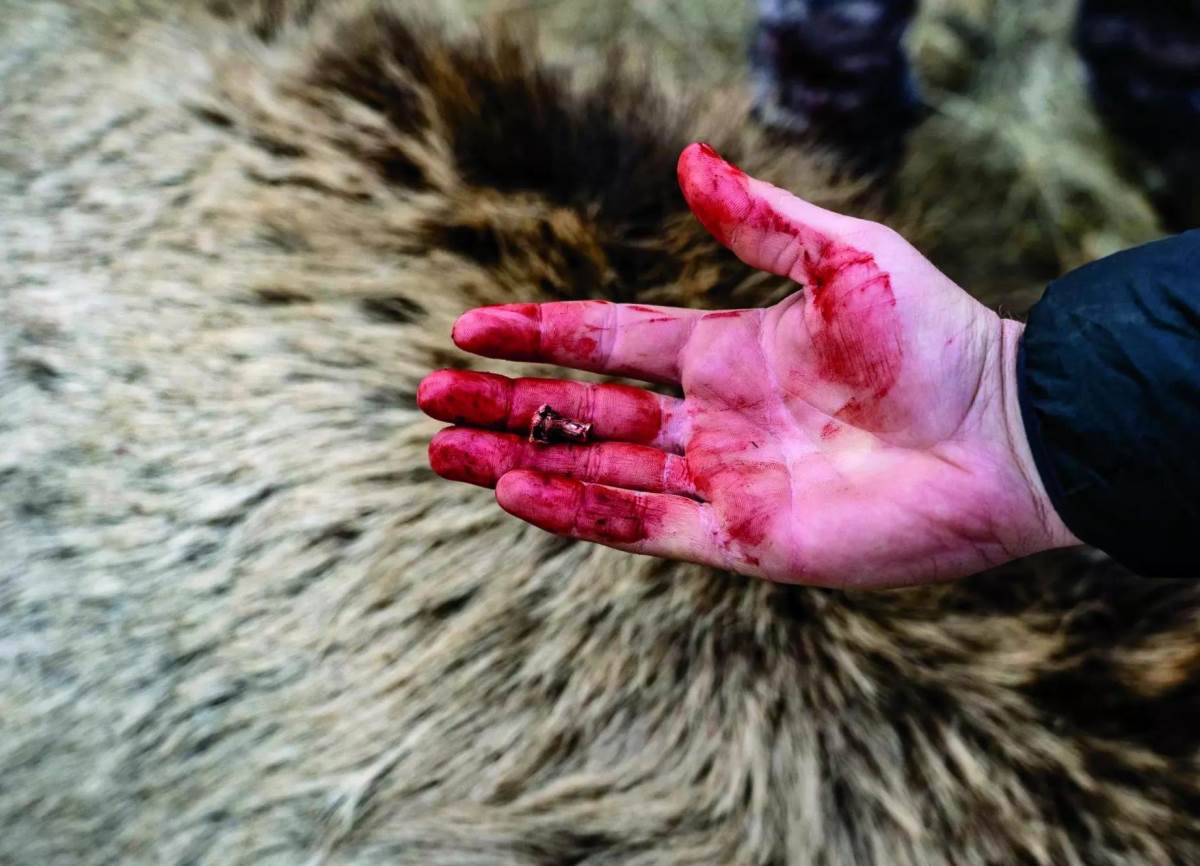
Decades of hoping and dreaming for an opportunity to kill a big bull of his own were rapidly coming to fruition for my hunter as the rut-crazed bull came charging out of the aspens. At the crack of the rifle, the perfectly symmetrical 6×6 bull dropped in a cloud of dust, trying to regain his motor skills. “Shoot him again!” I enthusiastically urged. My hunter, now f lustered as the bull flailed 180 yards below us, sent two more rounds downrange, neither of which connected. As my hunter reloaded, the bull began to get his legs underneath him and a slow stagger quickly turned to a dead sprint directly away from us and out of our lives forever. We spent the next two days looking for that bull, to no avail. With a strict wounding policy, my hunter was physically sick and understandably devastated.
I have seen this exact scene play out on multiple occasions, which brings me to my next tidbit of advice: If you shoot your bull and he instantly drops, shoot him again. If you can’t see him due to an obstruction, stay on your scope for several minutes following impact. I have seen far too many bulls dropped in their tracks, only to jump to their feet minutes later and kick up dust clear to the next zip code, leaving the hunter stunned and deflated. Oftentimes, the bullet’s transfer of energy stuns the spinal column, momentarily paralyzing them, without break- ing bone or doing any kind of terminal damage.
ELK RIFLES
We have established my thoughts on adequate cartridges, bullet selections, and shot placement to effectively kill bull elk. I also reached out to friend and gun writer Wayne van Zwoll. Wayne has more big bulls to his name than just about anyone, and he’s also a master ballistician. When I picked his brain, he replied, “If memory serves, I’ve taken elk with 38 cartridges. There are so many good elk cartridges, it’s hard to pick one. Pinned to one, I’d choose the .308 Norma with a 200-grain Nosler Partition or Swift A-Frame out of a pre-64 Winchester Model 70.” That’s a cartridge from the past, but I put serious stock in Wayne’s opinions and it does point to the .30 caliber + big bullet combo formula.
Wayne’s words got me thinking about what my personal go-to elk rifle would be? The answer to this question changes regularly, with so many good options out there. But if I were to reach in the safe today, I would grab my custom .30 Nosler built on a classic Remington 700 action. Completely set up, this rifle weighs right at 7.5 lbs. and has a sweet tooth for Federal’s 200-grain Terminal Ascent bullet, consistently producing sub-.50 MOA performances. This deadly combination has travelled with me from Alaska to Africa, knocking everything in its wake (including several elk) off their feet like the hammer of Thor fell upon them.

The quintessential elk rifle will vary from hunter to hunter and come in a variety of chamberings, makes, and models. But they will all exude three key characteristics.
First and foremost, your elk rifle of choice needs to be reliable no matter the location or elements you find yourself hunt- ing in. If the rifle fails, then all your hard work to put yourself in a position to fill your tag is in vain. Second, the rifle must be accurate. Let’s not dive into the long-range shooting debate, but any rifle delivering consistent 1-MOA groups or less at 100 yards is plenty accurate for any reasonable shot distance. The third and final characteristic that I look for when selecting an elk rifle is weight. Ounces equal pounds, and pounds equal pain in the backcountry. A lightweight rifle, although not a necessity, can shave several pounds off your total pack weight.
We live in a day and age where factory rifles regularly produce custom-built results. Below are nine of the best elk rifles currently on the market that combine reliability and accuracy in a lightweight(ish) setup. Given the proper cartridge, bullet selection, and shot placement, every one of these rifles can and will deliver the terminal blow to the bull of your dreams.
At the end of the day, the best rifle is the one that you have the most confidence in. Start with an appropriate cartridge, select a proper bullet, and then spend plenty of time practicing in hunting scenarios. The result will be lifelong memories, heavy packs, and full freezers the next time you settle your crosshairs and squeeze the trigger.
BROWNING X-BOLT WESTERN HUNTER LR
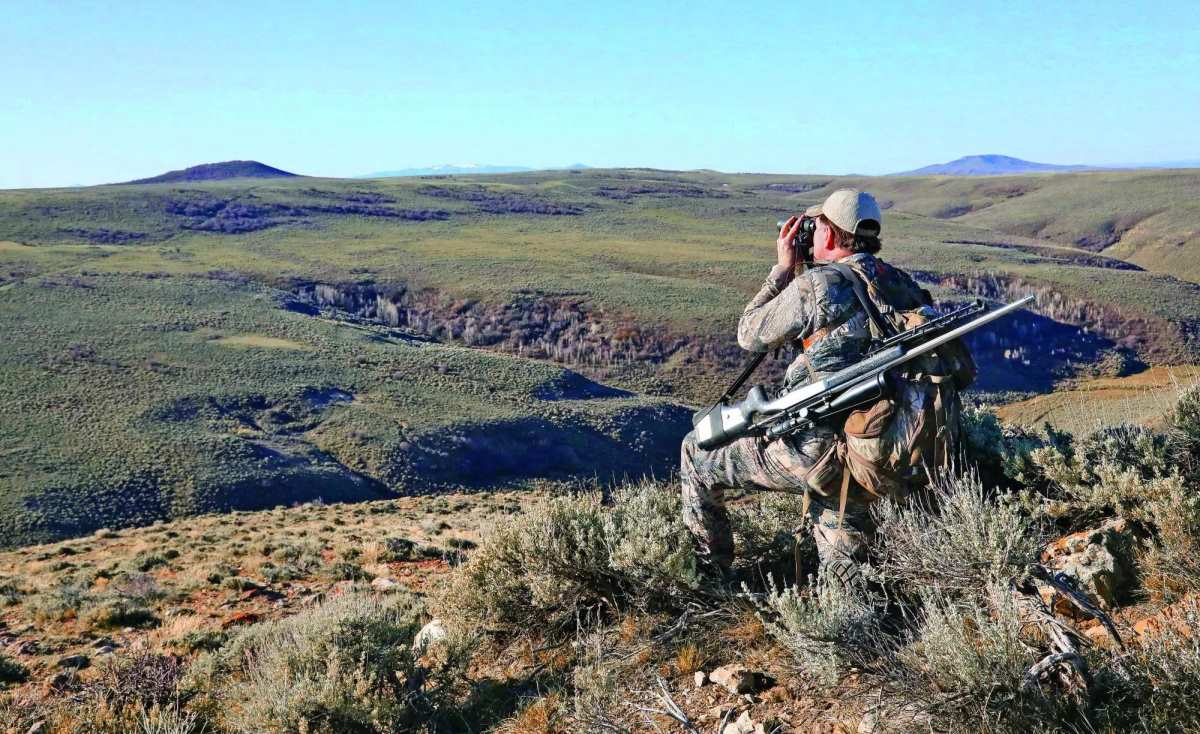
Browning’s X-Bolt Western Hunter LR rifle was designed to tackle the rugged mountains that elk call home. The Western Hunter LR model drops Browning’s tried-and-tested X-Bolt action into a lightweight, sporter-style stock, tied together with a free-floated, heavy sporter-contour barrel. Other noteworthy features of the composite stock include the integrated adjustable comb, allowing for 1″ adjustments and Browning’s new OVIX camo finish. The X-Bolt Western Hunter LR model is available in several calibers that are adequate for bull elk including one of my favorites, the 6.8 Western.
MSRP: $1,149.99 – $1,259.99
SAVAGE 110 ULTRALITE

The Savage 110 Ultralite rifle was made for the backcountry. Weighing 6 lbs. or less, this lightweight rifle is built around a blueprinted Savage 110 action and features a PROOF Research carbon-wrapped barrel and Savage’s AccuFit composite stock. The AccuFit technology built into the stock allows hunters to adjust the length of pull and comb height to their specifications, maximizing comfort and performance. This rifle also features Savage’s AccuTrigger, allowing shooters to easily adjust the trigger weight from a crisp 4 lbs. all the way down to a feathery 1.5 lbs. The Savage 110 Ultralite provides elk hunters an accurate, lightweight alternative at a reasonable price point.
MSRP: $1,649
WEATHERBY MARK V BACKCOUNTRY 2.0 CARBON
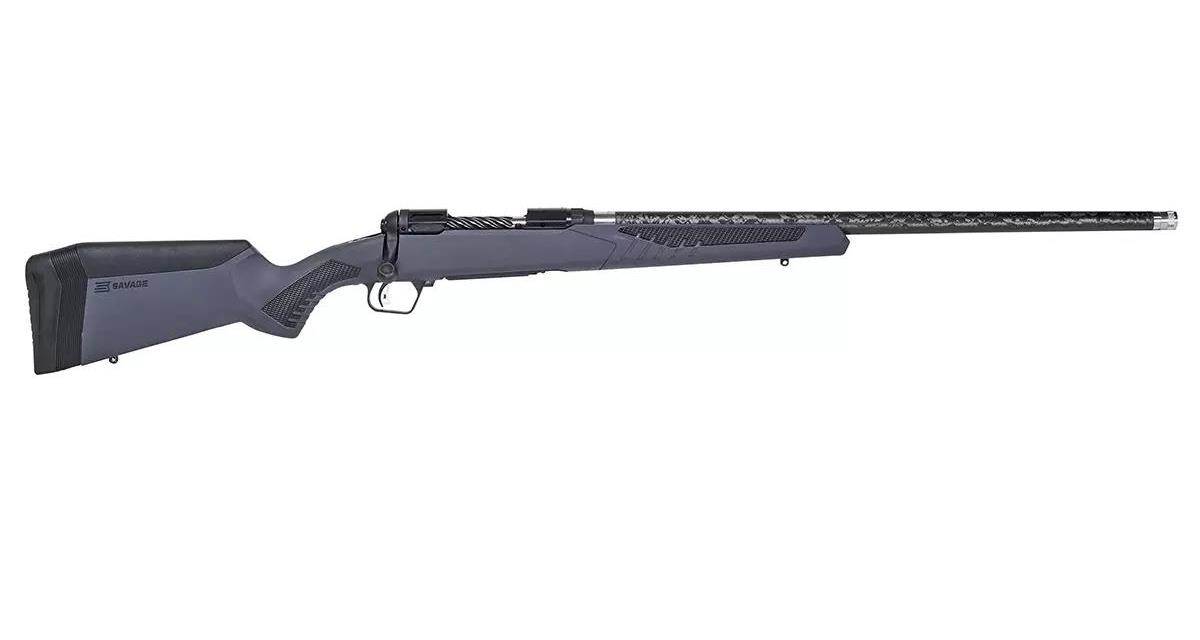
Weatherby’s recent launch of the Mark V Backcountry 2.0 Carbon adds an extremely lightweight option to the already successful line. The Backcountry 2.0 Carbon sports a carbon-wrapped barrel and Weatherby’s new Peak 44 Blacktooth stock, which they advertise as, “the lightest production carbon-fiber stock on the market.” A rifle weighing less than 6 lbs. is great for packing, but also comes with some hefty recoil when firing magnum cartridges. To manage recoil, the Backcountry Carbon 2.0 incorporates Weatherby’s 3DHex recoil pad, specifically designed to subdue the felt recoil from these magnum chamberings. With a sub-MOA guarantee and the reliable reputation that Weatherby has built, you can’t go wrong with the Mark V Backcountry 2.0 Carbon.
MSRP: $2,699 – $2,799
WINCHESTER MODEL 70 EXTREME WEATHER
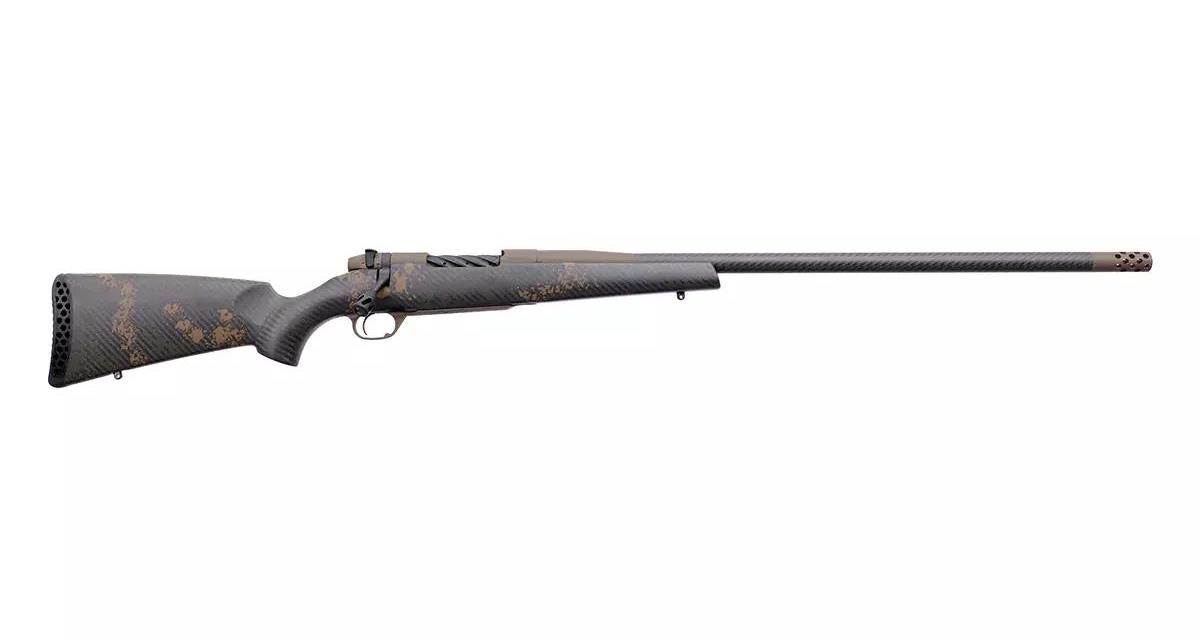
Winchester’s Model 70 Extreme Weather rifle was built to brave the harshest elements while still delivering the pinpoint precision and reliability that we have come to expect from Model 70 rifles. The Extreme Weather model utilizes a unique Bell and Carlson lay-up stock consisting of multiple composites, designed to deliver consistent performance from the frozen Arctic to the Sonoran Desert. Other features include a fluted stainless-steel barrel, Winchester’s M.O.A. Trigger System, and a Pachymayr Decelerator recoil pad.
MSRP: $1,679.99 – $1,719.99
SPRINGFIELD MODEL 2020 WAYPOINT
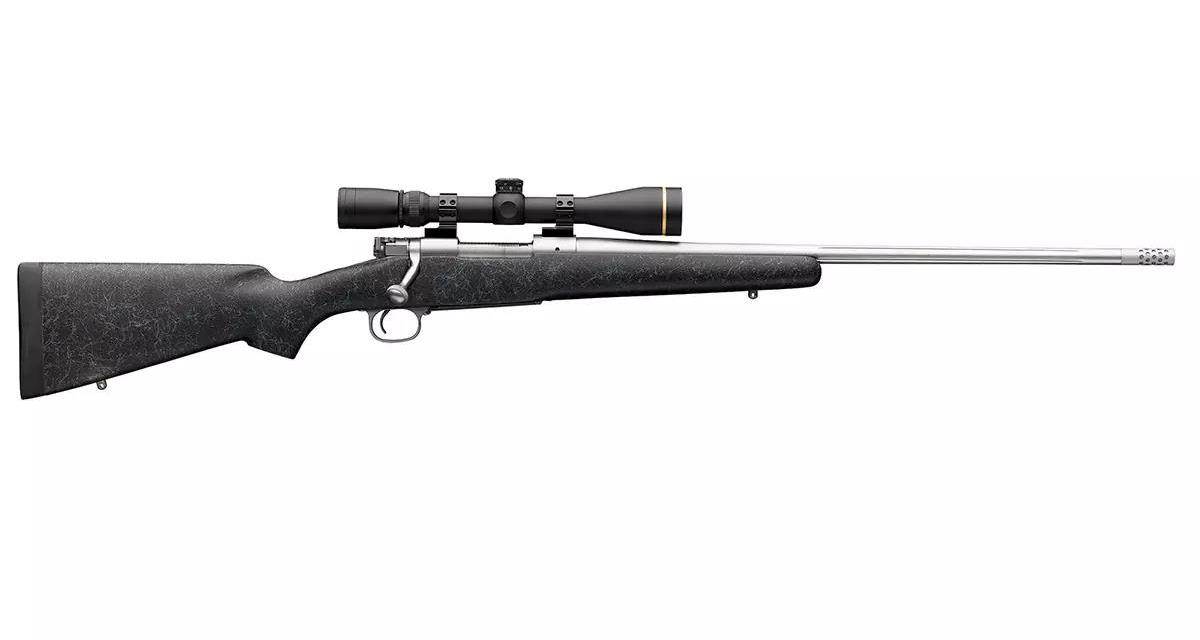
Springfield’s Model 2020 Waypoint has quickly gained a solid reputation in the hunting community. The Waypoint is loaded with premium features including a carbon-fiber stock, optional carbon-wrapped barrel, and a TriggerTech trigger. Springfield also engineered their own Model 2020 action, which they advertise as the Waypoint’s “Foundation for success.” The only downside is the lack of chamberings:.308 Win., 6.5 Creedmoor, and 6.5 PRC.
MSRP: $1,797 – $2,394
BERGARA PREMIER CANYON
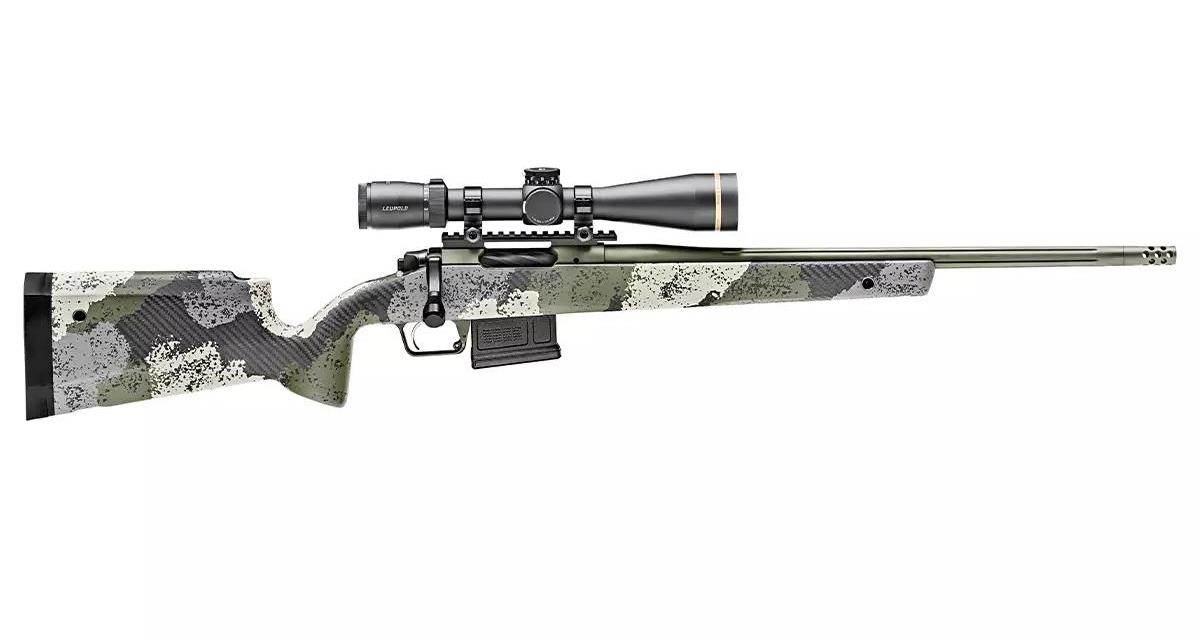
Bergara’s Premier Canyon rifle was designed and engineered to tackle the Rocky Mountains of the West that the mighty wapiti call home. The Canyon rifle utilizes a 100% AG composite stock and fluted, gray cerekoted barrel paired with Bergara’s Premier action. Other features include a premium TriggerTech trigger and AICS-style detachable magazines. Depending on caliber, the Canyon tips the scales between 6.2 lbs. and 6.5 lbs. Speaking of chambering options, the Bergara Canyon provides several fantastic options for elk hunting, including .28 Nosler, .300 PRC, and .300 Win. Mag. With a 1-MOA guarantee, the Canyon will deliver adequate accuracy far past most hunters’ effective shooting range.
MSRP: $2,379 – $2,429
BENELLI LUPO
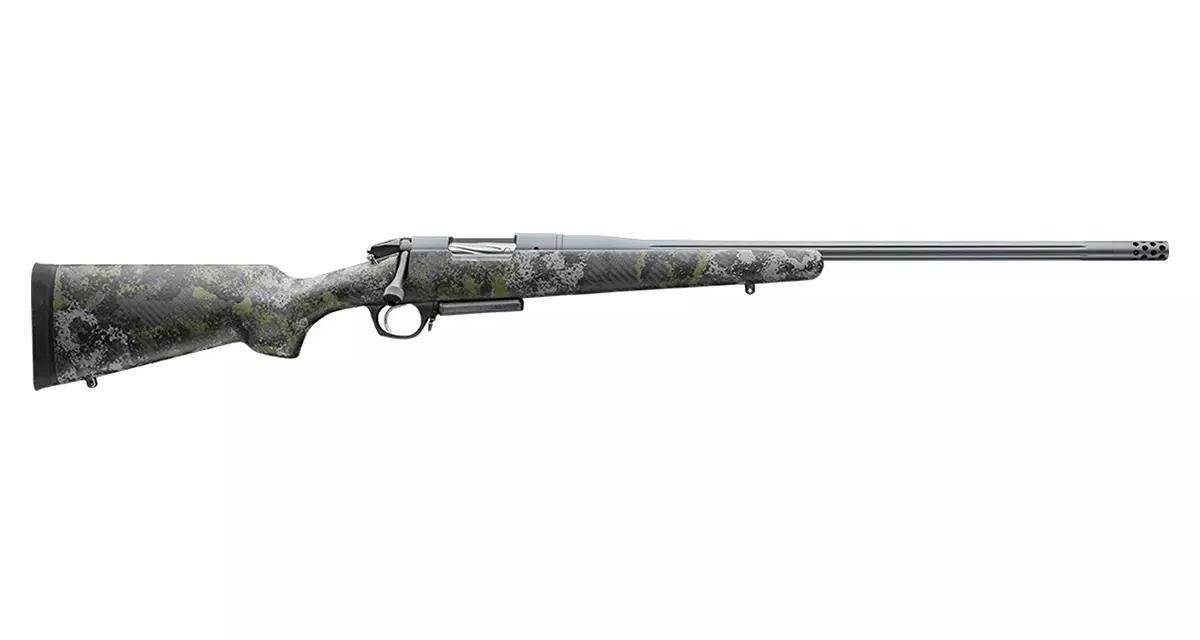
Benelli’s release of the Lupo chassis-style hunting rifle is their first step into the bolt-action rifle arena. You will notice many similarities between their shotguns and the Lupo, including the Combtech cheek pad and pistol-grip stock. The Lupo also features an integrated Progressive Comfort system to reduce recoil, plus the ability to adjust drop, cast, trigger reach, and length of pull with a variety of different shims for maximum comfort and adjustability. We wore one of these guns out at a long-distance school in Utah—ringing steel to 1,000 yards. The Lupo can certainly hold its own on the mountain.
MSRP: $1,699
MOSSBERG PATRIOT LR HUNTER
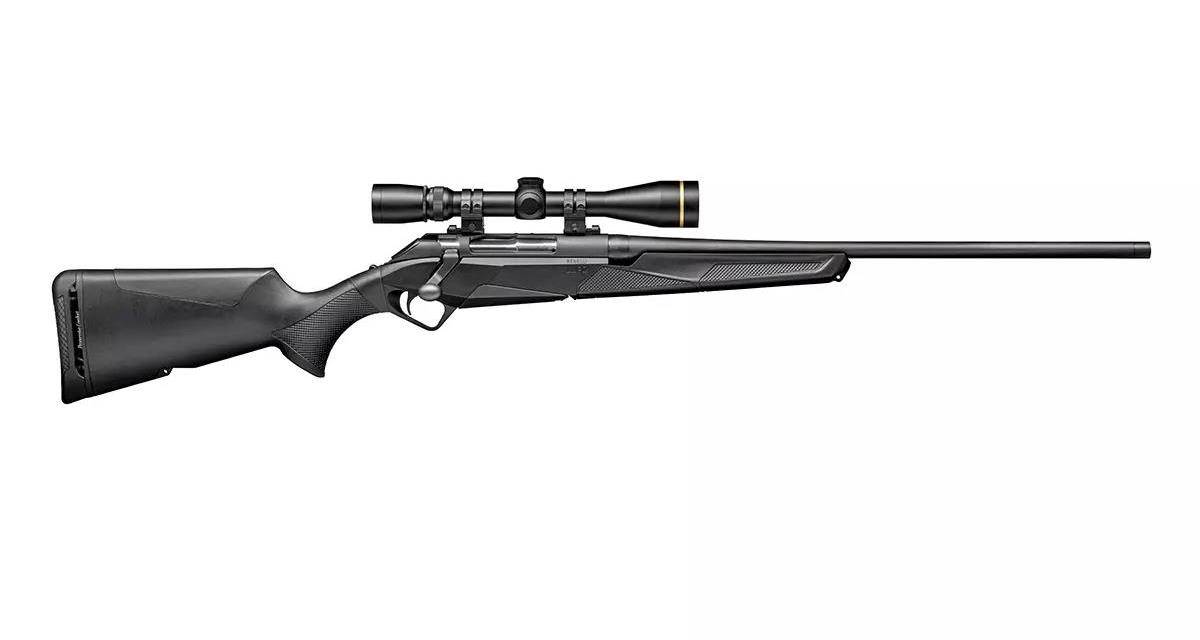
Mossberg’s Patriot rifles have been providing affordable, reliable firearms for hunters for years. One of Mossberg’s recent launches is the Patriot LR Hunter. This particular model incorporates several key features to help you stretch your shot distance when necessary. Primarily, the Patriot LR Hunter incorporates a new Monte Carlo-style stock with an elevated comb conducive to making precision-type shots. The stock also features a benchrest-style forend for maximum support on a variety of shooting rests. Other features include a fluted barrel, oversized bolt handle, and an adjustable trigger from 7 lbs. all the way down to 2 lbs. The Patriot LR Hunter is a solid option for a sub-$1,000 dollar elk rifle.
MSRP: $797
NOSLER 21
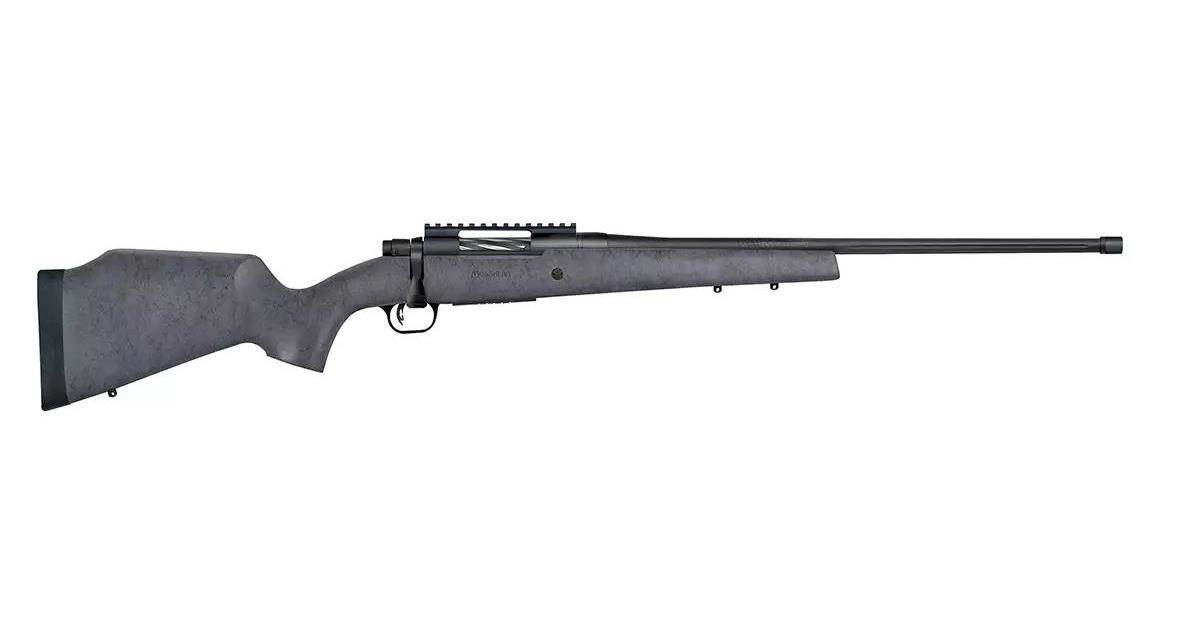
Nosler’s new Model 21 is loaded with custom features. At its core is Nosler’s newly engineered Model 21 action. This smooth-running action was designed in conjunction with the Mack Brother’s and closely parallels their EVO action, with a few upgrades. The rifle also features a 100% carbon-fiber McMillan Hunters Edge stock, providing maximum strength while keeping weight at a minimum. The Model 21 utilizes a TriggerTech adjustable trigger, allowing shooters to easily adjust trigger pull from 5.5 lbs. to 2.5 lbs. Weighing around 7 lbs., the Model 21 is comfortable to carry and will deliver the precision knock-down performance when you settle the crosshairs on the bull of your dreams. It’s available in a variety of elk-killing chamberings.
MSRP: $2,795














































